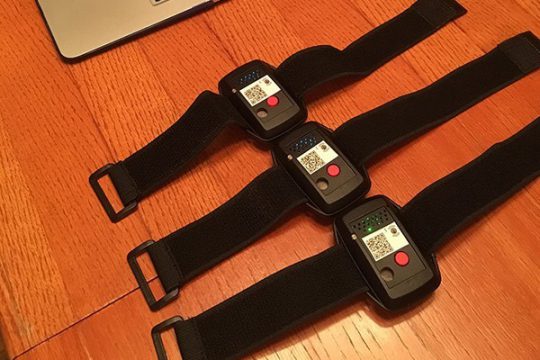MākuSafe’s Tom West Joins InsureTech Geek Podcast for First Video Episode
September 14, 2020
Check out The InsureTech Geek Episode 31 with MākuSafe’s Tom West. Tom joins James Benham and “The Most Interesting Man in Insurance,” Rob Galbraith to discuss reducing safety claims with tech & data.
Safety Tech & Data Q&A
We’ve pulled some of the Q&A below from the discussion. You can read the full interview transcript here.
JAMES: …. Tell me what MākuSafe does. Walk me through the solution, the technology behind it, and what problem it solves.
TOM: Yeah, thanks for asking. If you do not mind, I will take this tack as a sailor. The origin of our company is founded in the idea that we do not have to, or should not have to wait for people to experience injuries or have incidents or claims to occur, to have intelligence that ought to help us prevent those incidents in the first place. So proactively, preventatively, we ought to be able to identify things that are hazards and risks so that we can manage those things before people are impacted. Sometimes for life. So, MākuSafe has created innovative wearable technology that uses numerous sensors on board. And I do not know if you can see here clearly, but I am wearing our armband. Numerous sensors on board, this very small device that is about the size of my thumb, to collect data that can be useful, and have predictive value and understanding the risks and hazards that industrial workers face. And we provide that data via our software platform to safety leaders and also to loss control departments and safety experts employed by insurance companies so that they can help mitigate risk before people get hurt.
JAMES: And you are actively monitoring them, improving your algorithms, analyzing movement and behavior, and then identifying risk factors so you can give them real–time feedback? Is that a fair assessment?
TOM: Yeah. I kind of like to talk about the day data that is collected on the wearable. Not in terms of the numerous sensors, but in four types of data that we are collecting. So first would be data about environmental conditions. Things like temperature, humidity, low light levels. They may sound kind of simple. On the other hand, they have a dramatic impact on people’s productivity. When they are experiencing fatigue, when heat exhaustion conditions are mounting. We have got things like air quality sensors on board. We have got a microphone on the device that detects sound exposure for workers. If you have ever been in an industrial environment, you know that those environmental conditions may actually change, depending on which side of a machine you are standing on. So, you can be 10’ away from another worker who is experiencing dramatically different conditions than you are. So that would be the first environmental condition.
Secondly, we are also detecting potentially harmful human motion. That was a natural place for us to start with slips and trips and falls accounting for so many workplace accidents, but we use accelerometers on the device, and we can also detect things like pushing and pulling that may be an exertion injury waiting to happen. Third would be the location of where these things are being experienced within a facility. So, we overlay that in our software platform onto a facility floor plan, and you almost get kind of a Doppler radar effect where a heat map view of the frequency of indicators that are being experienced by workers in those areas.
And then last would be, we have got a button on the front of the device that allows a worker to push it and hold it and they can record up to a 15–second voice memo. And that is intended to increase the communication of near–miss occurrences, or just enable smooth and easy reporting of observations from the front lines. So, every safety manager and every loss control guy or gal, says that this is the kind of have data that everybody wants more of. This is leading indicators of risk, and near misses that we all want to see. Yet everybody else agrees that a huge percentage of those things never get reported. So, we have created an automated way to collect that data and provide it to leaders for better decision making.





